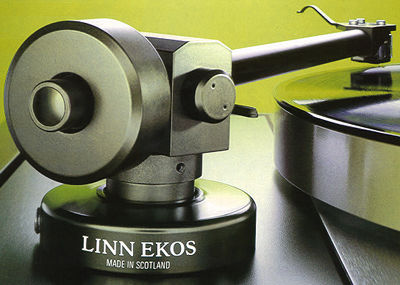Since its introduction over half a century ago, many hundreds of thousands of Hadcocks have been sold in over a hundred countries, making it one of the most popular tonearms that most audiophiles have never heard of. It’s a traditional unipivot design – indeed, for its fans, it’s the classic unipivot – that predates more fashionable models like the Naim ARO by a long shot. This is the essence of no-nonsense British hi-fi, designed by George Hadcock in the late 1960s and sitting in the same niche as Quad before it went mainstream. It’s still a family business that hand-assembles its goods; in fact, current managing director Charles Hadcock used to put the arm together for pocket money as a kid.
There isn’t much to this tonearm – and for its fans, that is part of its appeal. The bearing cup is mounted on the pin, and there’s a removable polished stainless steel arm tube that makes changing cartridges a breeze. There’s also an integrated headshell and, of course, wiring. The counterweight is a stainless steel disc with a hole at the top at the other end of the tonearm; bias is achieved using the tried-and-true string and weight method. The headshell can slide forward and back thanks to a hexagonal screw. It’s a pig to set one up if you’ve never done it before, but it becomes easier with practice and isn’t as difficult as some people make it out to be. You’ll get there in the end if you’re systematic and patient – just don’t expect to accomplish it during the commercial break between two episodes of your favorite weekly soap opera!
Hadcock now provides two basic models: the GH 228 and the GH 242. The biggest difference between them is their effective length. The GH 228 Export 9 is now the only version of a tonearm that has been in existence for nearly 50 years; it is better looking than it has ever been – when Charles Hadcock took over from his father a decade or so ago, the quality of finish skyrocketed – and the headshell has been redesigned. The effective length is 228.6mm, compared to 243.8mm for the other arm; this means better tracking due to improved geometry, but it won’t fit all turntables. The GH 242 Export, which costs £786.38, is the most basic version with oxygen-free copper wire, but it also comes in GH 242 Export Cryo, GH 242 Cryo, GH 242 Integra, and GH 242 Super silver, which costs £1,526.81 at the time of writing. Mechanically, all models are identical, with the exception of internal wiring.
It’s vital to keep in mind that unipivots operate best with low-mass, high-compliance cartridges at this stage, so keep that in mind while choosing a partnered pick-up. Cartridges weighing 3 to 12 grams will be tracked by the arm. Given its small size, installing a turntable isn’t too difficult. The arm tube is 304.8 mm in length and sits between 43 and 90 mm above the mount. The pivot distance from the platter center is 226 mm, while the rear overhang is 62 mm. The Hadcock uses a 15.87mm mounting hole, and many turntable manufacturers, such as Michell, sell armplates that are already cut.
The Hadcock is a quintessential unipivot acoustically, which means it sounds great in its own right – but it won’t appeal to everyone. The way it plays music has a lovely fluidity to it, especially in the midband, where things just ebb and flow in the most organic way possible. There’s a good amount of detail and a broad soundstage, but this is when things start to go wrong. Individual instrument placement isn’t as good as it is in many traditional designs – everything sounds a little hazy and opaque – and the frequency extremes aren’t as bright. Bass lacks the grip and sheer extension of a comparably priced traditional tonearm, resulting in a noticeably flabbier sound, particularly with beat-driven rock music. There’s less air and space at the other end of the frequency spectrum than there should be, but it’s still pleasant enough.
Regardless, the Hadcock is excellent value for money at £786.38 for the entry-level model. It excels at what it does, providing it a quick route to a genuinely exotic-sounding vinyl front end if you can deal with its flaws. This is a fantastic product in its own right, and it constantly amazes me that more people aren’t promoting it. You get a lot of bang for your buck when properly matched to the right cartridge and meticulously set-up.







